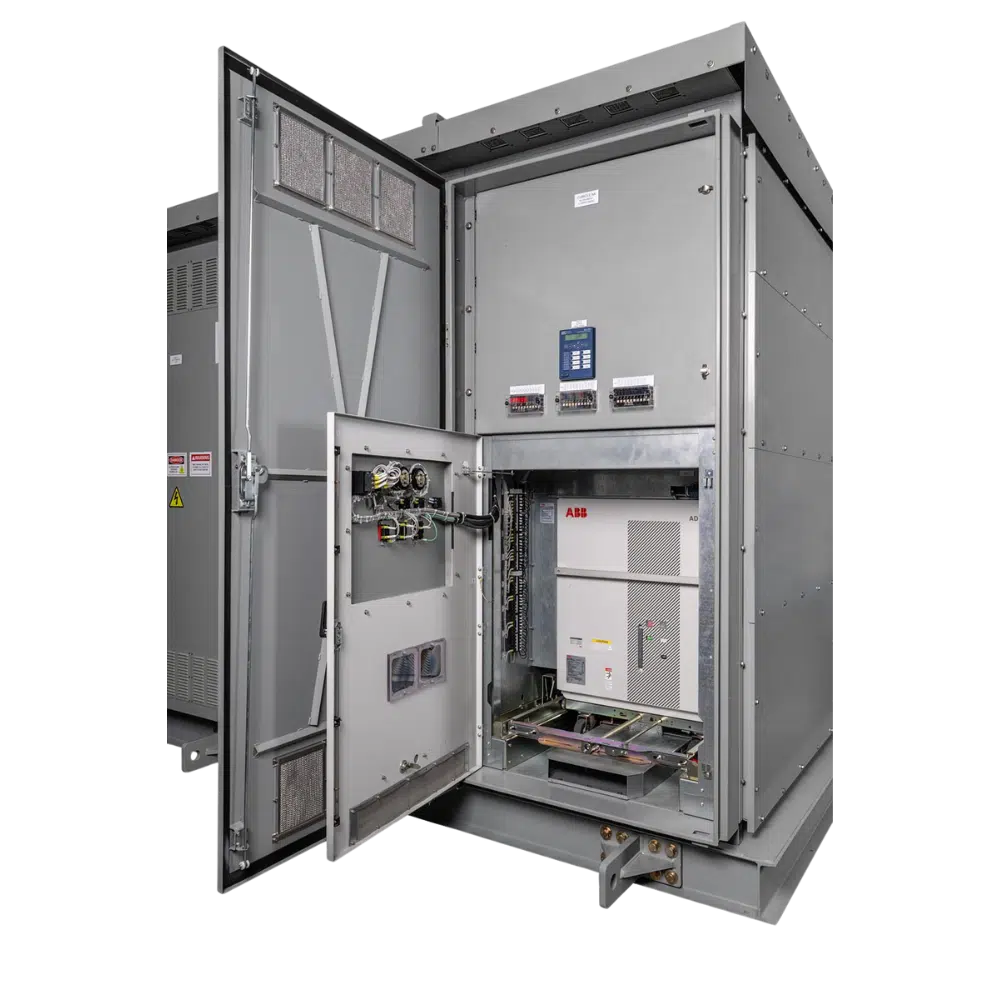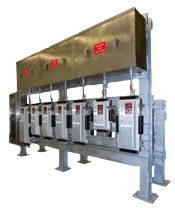
When it comes to electrical infrastructure, reliability, safety, and compliance are paramount. Organizations across industries rely heavily on switchgear systems to distribute and control electrical power safely and efficiently. However, as infrastructure ages, existing switchgear can become outdated, unsupported, or even dangerous — leading organizations to consider conversions or upgrades rather than complete replacements.
This is where IEEE C37.59-2018 plays a critical role. It provides comprehensive guidance for safely and compliantly converting existing switchgear systems to meet modern standards.
What Is IEEE C37.59-2018?
IEEE C37.59-2018 is a key industry standard published by the Institute of Electrical and Electronics Engineers (IEEE). It outlines best practices and formal procedures for converting power switchgear equipment while maintaining — or enhancing — safety, performance, and compliance with technical and regulatory requirements.
The document is widely used by manufacturers, utilities, service providers, and engineering firms that seek to modernize electrical equipment without the cost, time, and disruption of full replacement. It ensures that conversions are done correctly, consistently, and safely.
Who Can Perform Switchgear Conversions?
Not all contractors, electricians, or test companies are qualified to perform switchgear conversions.
-
- The standard implies that only highly experienced professionals should undertake these types of upgrades. This includes:
- Switchgear manufacturers familiar with UL/ANSI/IEEE compliance
Firms that have undergone NRTL (Nationally Recognized Testing Laboratory) testing and certification - Teams with staff participating in IEEE committees or trained in the most recent electrical codes
- Organizations with experience in field retrofits, not just bench testing or engineering-only roles
Unqualified contractors can:
-
- Invalidate UL listings
- Install improper insulation or bus support
- Miswire protection logic and interlocks
- Create serious arc flash and safety hazards
- Introduce undocumented changes that compromise future maintenance
At Spike Electric, we believe these conversions should be performed by field service teams from qualified manufacturers — not by general contractors or firms unfamiliar with the equipment’s original design intent.
Why Switchgear Conversion Matters
Switchgear conversions offer strategic advantages for facility managers, utilities, and industrial plants:
-
- Cost Efficiency
Conversion projects are significantly less expensive than complete replacements. - Extended Equipment Life
Upgrades can add 10–20 years to aging systems. - Improved Safety
Modern components and design updates reduce arc flash hazards and enable safer operation. - Regulatory Compliance
Updates help meet the latest NEC, IEEE, NFPA, UL, and OSHA standards. - Sustainability
Reusing existing metal-clad gear reduces environmental waste and heavy logistics.
- Cost Efficiency
Key Elements of IEEE C37.59-2018
The standard defines several essential areas for compliant switchgear conversion:
1. Design Verification
This requires formal testing to confirm that any physical or electrical modifications do not compromise the equipment’s functionality, insulation, or mechanical strength.
It includes:
-
- Dielectric testing
- Mechanical endurance validation
- Coordination with existing protection schemes
- Seismic and short-circuit strength checks (where applicable)
2. Documentation
IEEE mandates full documentation of:
-
- All design modifications
- New one-line diagrams
- Testing procedures and results
- Ratings and labeling updates
- Any change that affects certification, safety, or maintenance
Improper or missing documentation is one of the top violations cited in post-incident investigations.
3. Types of Conversions
IEEE C37.59-2018 supports various kinds of field and shop-level switchgear upgrades:
-
- LV to MV gear conversions
- Breaker retrofits (air-magnetic to vacuum or SF6)
- Arc-resistant reconfiguration
- Relay and control system modernization
- Bus modifications and main-tie-main layout changes
- Retrofit of grounding and safety interlocks
The Conversion Process (Simplified Flow)
IEEE C37.59-2018 lays out a structured and repeatable path:
-
- Assessment & Planning – Inspection and system analysis
- Engineering & Design – Mechanical and electrical design modeling
- Implementation & Retrofitting – Field or factory-based modification
- Testing & Verification – FAT, SAT, dielectric, and logic validation
- Documentation & Compliance Review – Final documentation package and standard conformance audit
Special Note on UL Listings
If an Underwriters Laboratories (UL)-listed switchgear assembly is converted, IEEE C37.59-2018 clearly states that the modified equipment must be resubmitted to UL or another Nationally Recognized Testing Laboratory (NRTL) to maintain its certified status. In other words, any modification to a UL-listed assembly voids the original UL certification unless it is formally retested or relabeled through the appropriate channels.
This is not a suggestion — it’s a critical compliance and safety requirement. The most efficient, reliable, and cost-effective way to navigate this process is to work directly with a switchgear manufacturer who already has an established relationship with UL or a certified NRTL and has successfully completed the testing and listing process. These manufacturers understand the technical, mechanical, and regulatory complexities involved and can streamline documentation, testing, labeling, and coordination with the certifying body.
Bottom line: It is extremely risky and potentially hazardous to allow just anyone to upgrade or modify your switchgear. Doing so without following the procedures outlined by the governing engineering body the IEEE can result in catastrophic equipment failure, liability exposure, and loss of compliance. Always ensure conversions are performed by qualified professionals who are equipped to manage the UL/NRTL recertification process correctly and safely.
Protecting Your Facility with Proper Expertise
IEEE C37.59-2018 doesn’t directly restrict conversions to original manufacturers — but it strongly implies that anyone doing these upgrades must:
-
- Be deeply familiar with switchgear design and safety systems
- Be fluent in IEEE, UL, and ANSI testing standards
- Have access to simulation tools and verification equipment
- Be capable of engineering, building, and field-testing equipment
That’s why Spike Electric uses our own in-house engineers and UL-trained field service techs. When we modify gear, we do it from the inside out — with design, safety, and compliance in every bolt.
Benefits of Following IEEE C37.59-2018
Organizations that adopt this standard gain:
-
- Improved Safety – Minimized risk of failure or arc flash events
- Increased Reliability – Smoother operation and fewer interruptions
- Documented Compliance – Ready for OSHA, UL, and NFPA audits
- Future-Proofing – Easier upgrades down the road with clear documentation
- Operational Confidence – Know your gear is safe and ready
FAQs –
Who should perform switchgear conversions?
Only qualified switchgear manufacturers or field service providers with experience in UL/IEEE compliance, NRTL testing, and system protection.
What is IEEE C37.59-2018?
It is an IEEE standard outlining best practices for the safe and compliant conversion of power switchgear equipment.
Is a UL listing still valid after switchgear modification?
Not automatically. Modified equipment must be submitted for re-approval by UL or labeled accordingly by a qualified party.
What kind of testing is required?
Design verification, dielectric strength, breaker timing, relay function, and safety interlocks — all per IEEE and ANSI protocols.
Final Thought: Don’t Cut Corners on Critical Power Gear
You wouldn’t let just anyone perform surgery on your heart. So why let just anyone touch your switchgear?
IEEE C37.59-2018 is more than a standard — it’s a safety blueprint. And at Spike Electric, we don’t just follow it — we’ve built our business on it. Our conversions are engineered by the same minds who design switchgear from scratch, tested in real-world field conditions, and documented for your peace of mind.
If you’re considering a conversion, retrofit, or upgrade, don’t leave it to guesswork. Let our team help you do it the right way — the Spike Electric way.


